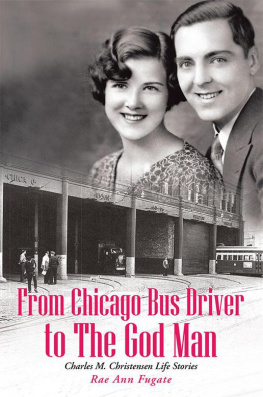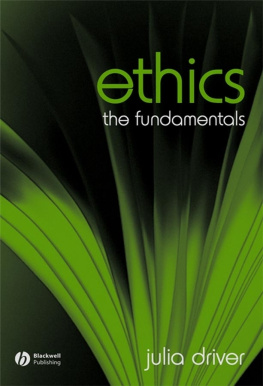Originally published in 1976 by Schenkman Publishing Company
Published 2014 by Transaction Publishers
Published 2017 by Routledge
2 Park Square, Milton Park, Abingdon, Oxon OX14 4RN
711 Third Avenue, New York, NY 10017, USA
Routledge is an imprint of the Taylor & Francis Group, an informa business
Copyright 1976 by Schenkman Publishing Company.
All rights reserved. No part of this book may be reprinted or reproduced or utilised in any form or by any electronic, mechanical, or other means, now known or hereafter invented, including photocopying and recording, or in any information storage or retrieval system, without permission in writing from the publishers.
Notice:
Product or corporate names may be trademarks or registered trademarks, and are used only for identification and explanation without intent to
Library of Congress Catalog Number: 2014003528
Library of Congress Cataloging-in-Publication Data
Vidich, Charles.
The New York cab driver and his fare / Charles Vidich.
pages cm
Includes bibliographical references.
ISBN 978-0-87073-926-2
1. Taxicabs-New York (State)-New York. 2. Taxicab drivers-New York (State)--New York. I. Title.
HE5634.N5V53 2014
388.41321409747 l--dc23
2014003528
ISBN 13: 978-0-87073-926-2 (pbk)
In large measure the publics image of the New York City taxi industry has been formulated by the timeless quality of the hacks character. Although the taxi driver poses as a public servant, his actions and his historical reputation in New York have led the public to believe he is all too often working as a crook. In order to introduce the reader to the present image of the New York taxi driver, and the nature of his service, it is necessary to delve into the reputation he has acquired over the past century.
Originally New York was a hansom cab town and each driver worked for himself. There were no great fleets prior to 1907 and in fact only the horse drawn carriage and the electric cab existed in those days. In 1906 the New York Times carried a story revealing the nature of the New York hack.
One class of cabmen that are in nearly as bad repute with other cabmen as they are with the public are those known as dock rats. They stand at the steamship piers to pick up strangers that look easy. These dock rats and the men who are in league with disreputable resorts are the curse of decent hackmen. They are free lances that no organization would take in. They lay in wait for people they can overcharge. The dock rats work two to a cab sometimes. When a man leaves a boat, takes a cab and is carried to his destination, the cabman demands two or three times the legal rate. His partner stands by and if there is any hesitation about paying, he says, Pay up. What rye waiting for? In other words, they intimidate the stranger.
By monopolizing the entrances to the city at major piers and terminals, the cab drivers had the public at their mercy. The lack of integrated bus and subway service at the turn of the century serving the demands of rail and boat passengers, created a large market for the taxi driver. In controlling these various transportation systems, the driver could inevitably make the public pay a premium price for his service.
The Plight of the Immigrant
The extortions and crimes of petty larceny indigenous to the operations of the New York docks and passenger terminals left a profound impression on the early immigrants to America. As early as 1913, there were as many as 500,000 aliens passing through the port of New York per year. These immigrants were confronted with a new world of which they knew nothing.
Hackmen, guides, and runners hired by hotels all preyed upon the bewildered immigrants arriving from Ellis Island. These characters forced their services upon the unsuspecting immigrants and then proceeded to take advantage of their victims. It was not uncommon in the early 1900s, when millions of immigrants were rushing to make their homes in America, to find cab drivers, guides, runners and porters victimizing those most in need of their assistance. In those early days cab drivers often entered into conniving relationships with other disreputable public servants in order to put a more effective squeeze on the victims purse. It was not uncommon for a cab driver to have a working relationship with one or more runners or porters who steered the ignorant immigrant to his cab through various ruses often bordering on outright intimidation.
The immigrants first contact with America often was accompanied by a lesson in the business ethics of the cab driver. For many immigrants this primary and formative experience strengthened their conviction that they too must learn the ways of American business to achieve success. Indeed, many immigrants entered the taxi profession in its early years, realizing that their original language could be quite effectively used to swindle their former countrymen. The immigrants problem was clearly stated by the Department of Licenses in 1913 when they released the following news:
The boats from Ellis Island land at the Barge office in Battery Park which is the immigrants first contact with America. Operating here are a number of porters, expressmen, hackmen and cabmen. These men, through various ruses force their services upon the immigrants, offering to conduct them to their destinations. The bewildered immigrants absolutely ignorant of the city and anxious to do whatever is expected of them, but unable to find out what that is, on account of their ignorance of English, listen eagerly to some one speaking their own language, and are easily drawn into asking questions and accepting directions or guidance. The runners or other agents are not content to charge a reasonable or legitimate rate for their services, but take advantage of the immigrants ignorance of English and of the value of the American money, and of their fear of trouble with the authorities, to extort considerable sums of money from them. In some cases they simply rob them outright.

Battery Park, South Ferry, N.Y. Early immigrants were fair game for the cab hustler. (The Staten Island Historical Society)
These hack men were no different from the dock rats operating on the west side piers of Manhattan. However, the ramifications of their actions were more damaging since the immigrant was completely unable to fend for himself. The limited but powerful monopoly of the cab driver over early American immigrants helped to formulate the New York cab drivers notoriety throughout the entire nation. Much of the unpleasantness associated with the initial encounter with American life in New York was attributed to the character and psychology of the New York cab driver.
The dock rats of yesteryear are now the full grown airport rats of today, gouging foreign visitors and New Yorkers alike whenever they are at his mercy. The strong controls which the taxi driver once had over the river terminals and rail terminals of the city continue today at New Yorks two airports.
Night Hawks
The complementary anti-hero to the dock rat is and was the night hawk. Unlike the dock rat, the night hawk gains his advantage over the public through the cover of darkness and the greater value nighttime gives to taxi service. Indeed in the early days, a caste distinction existed between the day driver and the night driver since the night drivers robbed the public blind with relative immunity. This image is ageless and eternal, describing a practice of hustling that grows bolder as the sun sets. The night hawk learns to prey on the desperate taxi patron, demanding and extorting as much as he thinks the man can deliver. It was said during the 1930s that drivers would circle around and around the block until a pedestrian would finally consent to ride by cab just to avoid the nuisance and aggravation of soliciting hackmen.















